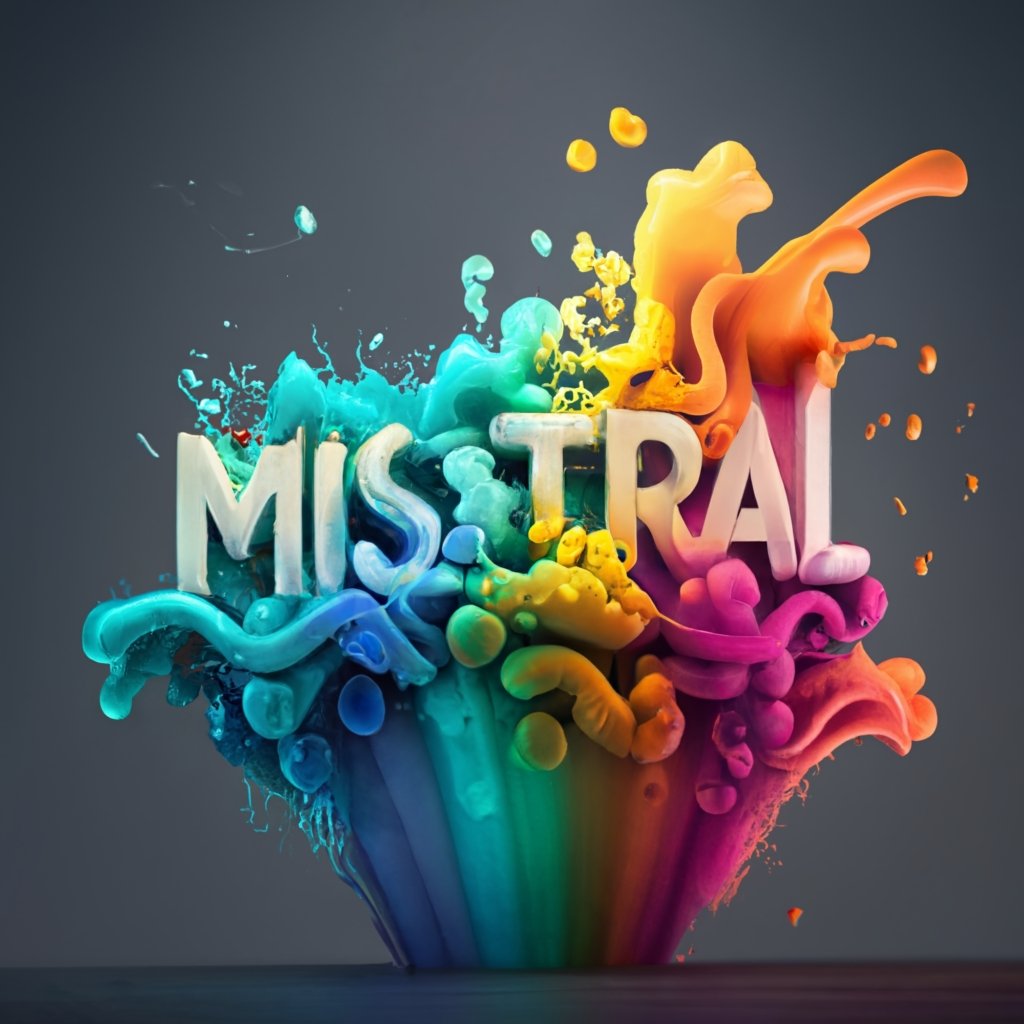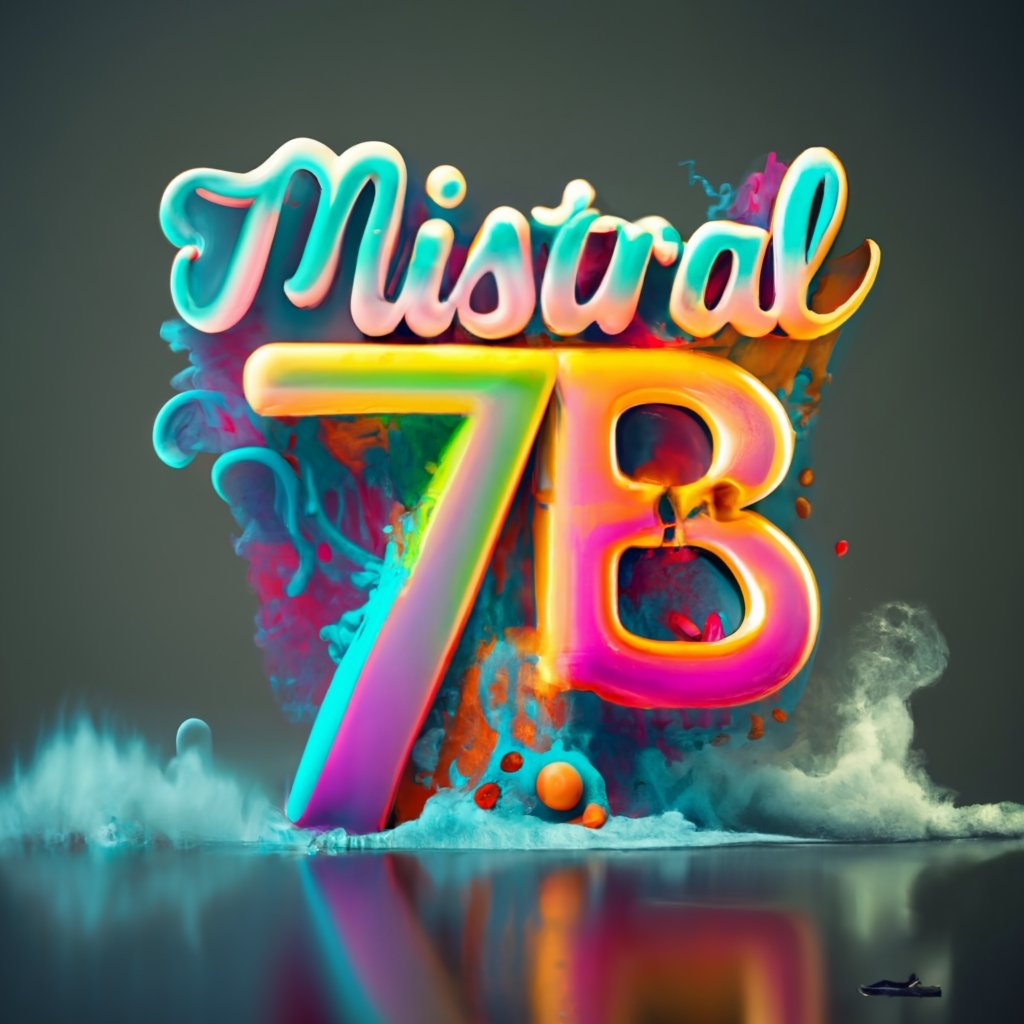mathstral-7B-v0.1
Maintainer: mistralai

178
👨🏫
| Property | Value |
|---|---|
| Run this model | Run on HuggingFace |
| API spec | View on HuggingFace |
| Github link | No Github link provided |
| Paper link | No paper link provided |
Create account to get full access
Model overview
Mathstral-7B-v0.1 is a model specializing in mathematical and scientific tasks, based on the Mistral 7B model. As described in the official blog post, the Mathstral 7B model was trained to excel at a variety of math and science-related benchmarks. It outperforms other large language models of similar size on tasks like MATH, GSM8K, and AMC.
Model inputs and outputs
Mathstral-7B-v0.1 is a text-to-text model, meaning it takes natural language prompts as input and generates relevant text as output. The model can be used for a variety of mathematical and scientific tasks, such as solving word problems, explaining concepts, and generating proofs or derivations.
Inputs
- Natural language prompts related to mathematical, scientific, or technical topics
Outputs
- Relevant and coherent text responses, ranging from short explanations to multi-paragraph outputs
- Can generate step-by-step solutions, derivations, or proofs for mathematical and scientific problems
Capabilities
The Mathstral-7B-v0.1 model demonstrates strong performance on a wide range of mathematical and scientific benchmarks. It excels at tasks like solving complex word problems, explaining abstract concepts, and generating detailed technical responses. Compared to other large language models, Mathstral-7B-v0.1 shows a particular aptitude for tasks requiring rigorous reasoning and technical proficiency.
What can I use it for?
The Mathstral-7B-v0.1 model can be a valuable tool for a variety of applications, such as:
- Educational and tutorial content generation: The model can be used to create interactive lessons, step-by-step explanations, and practice problems for students learning mathematics, physics, or other technical subjects.
- Technical writing and documentation: Mathstral-7B-v0.1 can assist with generating clear and concise technical documentation, user manuals, and other written materials for scientific and engineering-focused products and services.
- Research and analysis support: The model can help researchers summarize findings, generate hypotheses, and communicate complex ideas more effectively.
- STEM-focused chatbots and virtual assistants: Mathstral-7B-v0.1 can power conversational interfaces that can answer questions, solve problems, and provide guidance on a wide range of technical topics.
Things to try
One interesting capability of the Mathstral-7B-v0.1 model is its ability to provide step-by-step solutions and explanations for complex math and science problems. Try prompting the model with a detailed word problem or a request to derive a specific mathematical formula - the model should be able to walk through the problem-solving process and clearly communicate the reasoning and steps involved.
Another area to explore is the model's versatility in handling different representations of technical information. Try providing the model with a mix of natural language, equations, diagrams, and other formats, and see how it integrates these various inputs to generate comprehensive responses.
This summary was produced with help from an AI and may contain inaccuracies - check out the links to read the original source documents!
Related Models
⚙️
Mathstral-7B-v0.1

182
Mathstral-7B-v0.1 is a model specializing in mathematical and scientific tasks, based on the Mistral 7B model. As described in the official blog post, the Mathstral 7B model was trained to excel at a variety of math and science-related benchmarks. It outperforms other large language models of similar size on tasks like MATH, GSM8K, and AMC. Model inputs and outputs Mathstral-7B-v0.1 is a text-to-text model, meaning it takes natural language prompts as input and generates relevant text as output. The model can be used for a variety of mathematical and scientific tasks, such as solving word problems, explaining concepts, and generating proofs or derivations. Inputs Natural language prompts related to mathematical, scientific, or technical topics Outputs Relevant and coherent text responses, ranging from short explanations to multi-paragraph outputs Can generate step-by-step solutions, derivations, or proofs for mathematical and scientific problems Capabilities The Mathstral-7B-v0.1 model demonstrates strong performance on a wide range of mathematical and scientific benchmarks. It excels at tasks like solving complex word problems, explaining abstract concepts, and generating detailed technical responses. Compared to other large language models, Mathstral-7B-v0.1 shows a particular aptitude for tasks requiring rigorous reasoning and technical proficiency. What can I use it for? The Mathstral-7B-v0.1 model can be a valuable tool for a variety of applications, such as: Educational and tutorial content generation: The model can be used to create interactive lessons, step-by-step explanations, and practice problems for students learning mathematics, physics, or other technical subjects. Technical writing and documentation: Mathstral-7B-v0.1 can assist with generating clear and concise technical documentation, user manuals, and other written materials for scientific and engineering-focused products and services. Research and analysis support: The model can help researchers summarize findings, generate hypotheses, and communicate complex ideas more effectively. STEM-focused chatbots and virtual assistants: Mathstral-7B-v0.1 can power conversational interfaces that can answer questions, solve problems, and provide guidance on a wide range of technical topics. Things to try One interesting capability of the Mathstral-7B-v0.1 model is its ability to provide step-by-step solutions and explanations for complex math and science problems. Try prompting the model with a detailed word problem or a request to derive a specific mathematical formula - the model should be able to walk through the problem-solving process and clearly communicate the reasoning and steps involved. Another area to explore is the model's versatility in handling different representations of technical information. Try providing the model with a mix of natural language, equations, diagrams, and other formats, and see how it integrates these various inputs to generate comprehensive responses.
Updated Invalid Date

mistral-7b-v0.1

1.8K
The Mistral-7B-v0.1 is a Large Language Model (LLM) with 7 billion parameters, developed by Mistral AI. It is a pretrained generative text model that outperforms the Llama 2 13B model on various benchmarks. The model is based on a transformer architecture with several key design choices, including Grouped-Query Attention, Sliding-Window Attention, and a Byte-fallback BPE tokenizer. Similar models from Mistral AI include the Mixtral-8x7B-v0.1, a pretrained generative Sparse Mixture of Experts model that outperforms Llama 2 70B, and the Mistral-7B-Instruct-v0.1 and Mistral-7B-Instruct-v0.2 models, which are instruct fine-tuned versions of the base Mistral-7B-v0.1 model. Model inputs and outputs Inputs Text**: The Mistral-7B-v0.1 model takes raw text as input, which can be used to generate new text outputs. Outputs Generated text**: The model can be used to generate novel text outputs based on the provided input. Capabilities The Mistral-7B-v0.1 model is a powerful generative language model that can be used for a variety of text-related tasks, such as: Content generation**: The model can be used to generate coherent and contextually relevant text on a wide range of topics. Question answering**: The model can be fine-tuned to answer questions based on provided context. Summarization**: The model can be used to summarize longer text inputs into concise summaries. What can I use it for? The Mistral-7B-v0.1 model can be used for a variety of applications, such as: Chatbots and conversational agents**: The model can be used to build chatbots and conversational AI assistants that can engage in natural language interactions. Content creation**: The model can be used to generate content for blogs, articles, or other written materials. Personalized content recommendations**: The model can be used to generate personalized content recommendations based on user preferences and interests. Things to try Some interesting things to try with the Mistral-7B-v0.1 model include: Exploring the model's reasoning and decision-making abilities**: Prompt the model with open-ended questions or prompts and observe how it responds and the thought process it displays. Experimenting with different model optimization techniques**: Try running the model in different precision formats, such as half-precision or 8-bit, to see how it affects performance and resource requirements. Evaluating the model's performance on specific tasks**: Fine-tune the model on specific datasets or tasks and compare its performance to other models or human-level benchmarks.
Updated Invalid Date
↗️
mamba-codestral-7B-v0.1

458
Mamba-Codestral-7B-v0.1 is an open code model based on the Mamba2 architecture. It performs on par with state-of-the-art Transformer-based code models, as shown in the evaluation section. You can read more about the model in the official blog post. Similar models from the same maintainer include mamba-codestral-7B-v0.1, Codestral-22B-v0.1, Mathstral-7B-v0.1, and Mistral-7B-v0.1. Model inputs and outputs Mamba-Codestral-7B-v0.1 is a text-to-text model that can be used for a variety of code-related tasks. It takes text prompts as input and generates text outputs. Inputs Text prompts, such as: Instructions for generating or modifying code Natural language descriptions of desired functionality Partially completed code snippets Outputs Text completions, such as: Fully implemented code functions Explanations and documentation for code Refactored or optimized code Capabilities Mamba-Codestral-7B-v0.1 demonstrates strong performance on industry-standard benchmarks for code-related tasks, including HumanEval, MBPP, Spider, CruxE, and several domain-specific HumanEval tests. It outperforms several other open-source and commercial code models of similar size. What can I use it for? Mamba-Codestral-7B-v0.1 can be used for a variety of software development and code-related tasks, such as: Generating code snippets or functions based on natural language descriptions Explaining and documenting code Refactoring and optimizing existing code Performing code-related tasks like unit testing, linting, and debugging The model's broad knowledge of programming languages and strong performance make it a useful tool for developers, engineers, and researchers working on code-intensive projects. Things to try Try prompting Mamba-Codestral-7B-v0.1 with natural language instructions for generating code, such as "Write a function that computes the Fibonacci sequence in Python." The model should be able to provide a complete implementation of the requested functionality. You can also experiment with partially completed code snippets, asking the model to fill in the missing parts or refactor the code. This can be a helpful way to quickly prototype and iterate on software solutions.
Updated Invalid Date

mistral-7b-instruct-v0.1

916
The Mistral-7B-Instruct-v0.1 is a Large Language Model (LLM) that has been fine-tuned on a variety of publicly available conversation datasets to provide instructional and task-oriented capabilities. It is based on the Mistral-7B-v0.1 generative text model. The model uses grouped-query attention, sliding-window attention, and a byte-fallback BPE tokenizer as key architectural choices. Similar models from the Mistral team include the Mistral-7B-Instruct-v0.2, which has a larger context window and different attention mechanisms, as well as the Mixtral-8x7B-Instruct-v0.1, a sparse mixture of experts model. Model inputs and outputs Inputs Prompts surrounded by [INST] and [/INST] tokens, with the first instruction beginning with a begin-of-sentence token Outputs Instructional and task-oriented text generated by the model, terminated by an end-of-sentence token Capabilities The Mistral-7B-Instruct-v0.1 model is capable of engaging in dialogue and completing a variety of tasks based on the provided instructions. It can generate coherent and contextually relevant responses, drawing upon its broad knowledge base. However, the model does not currently have any moderation mechanisms in place, so users should be mindful of potential limitations. What can I use it for? The Mistral-7B-Instruct-v0.1 model can be useful for building conversational AI assistants, content generation tools, and other applications that require task-oriented language generation. Potential use cases include customer service chatbots, creative writing aids, and educational applications. By leveraging the model's instructional fine-tuning, developers can create experiences that are more intuitive and responsive to user needs. Things to try Experiment with different instructional formats and prompts to see how the model responds. Try asking it to complete specific tasks, such as summarizing a passage of text or generating a recipe. Pay attention to the model's coherence, relevance, and ability to follow instructions, and consider how you might integrate it into your own projects.
Updated Invalid Date